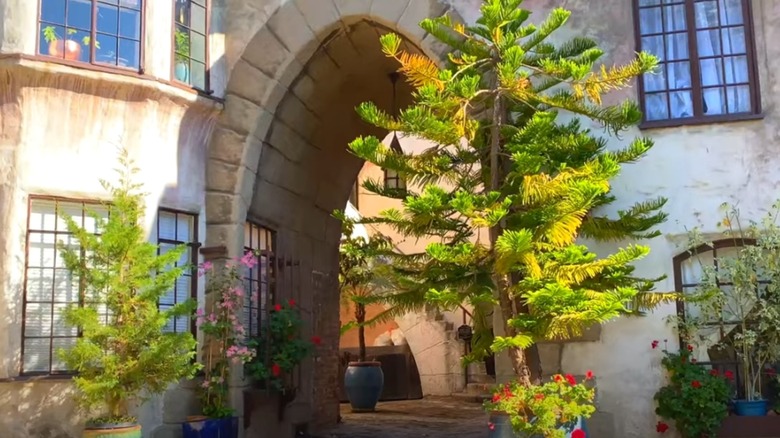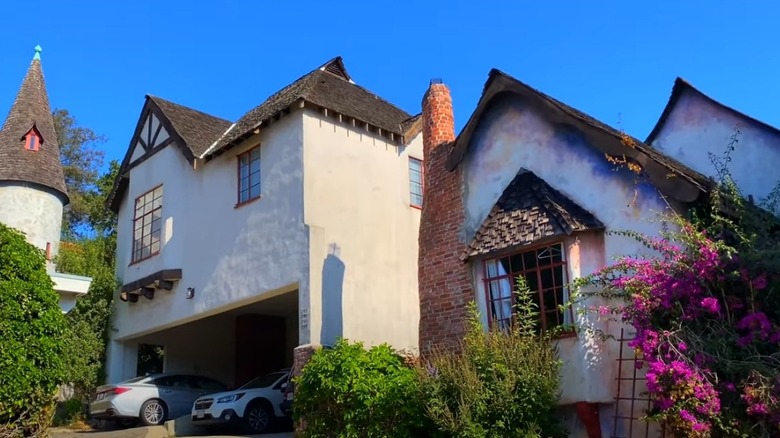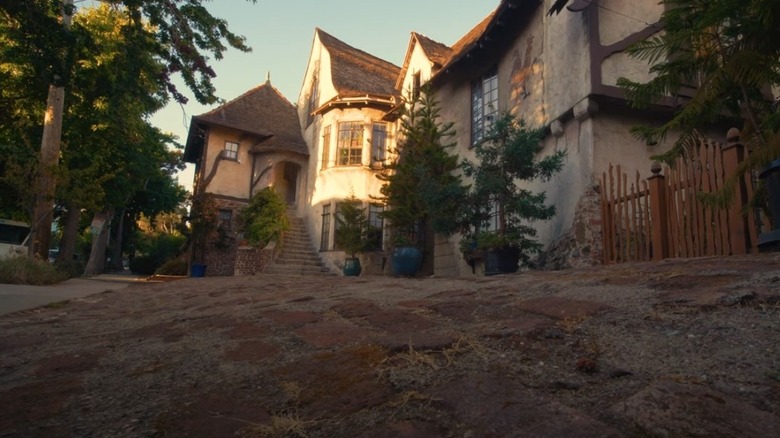California's European-Inspired Fairytale Village Features Artsy, Walkable Charm That Feels Like France
Berkeley has quite a reputation as a cultural hotspot, largely due to its rich history, thriving arts scene, and hub of education, and it's even considered one of California's most walkable destinations. However, the city still has a large number of hidden gems that tourists — and even many locals — are likely to overlook. One such gem is a neighborhood called Normandy Village, which is also often referred to as Thornburg Village. While largely confined to a single street, this spot has gained notoriety for its unique architecture that's heavily influenced by that found in Europe. To be more specific, this neighborhood looks like a French village from a storybook, which feels delightfully at odds with a city that's already known for its storied past.
Normandy Village is situated on Spruce Street, about half a mile from UC Berkeley and around a 30-minute drive from Oakland International Airport. Because of the residential nature of the neighborhood, there typically aren't any places to stay within Normandy Village itself. However, it is only a few blocks away from the more lively Downtown Berkeley, which has plenty of accommodation options, such as the Nash Hotel, the Residence Inn, and the Sens Hotel, all within walking distance of the famed street.
Aside from having a fascinating aesthetic that draws sightseers, Normandy Village is a quiet block. Luckily, Downtown Berkeley has so much more to do while you're in the area, including amazing restaurants, shopping, and arts & entertainment. Berkeley's location in the San Francisco Bay Area means it has fairly comfortable weather throughout the year, with the summers rarely getting too hot and the winters rarely getting too cold, so there's almost never a bad time to visit the city.
Normandy Village's amazing architecture
In a city filled with quirky sights, Normandy Village's provincial France atmosphere still makes it one of Berkeley's most singular oddities, not unlike what you'd find in this overlooked California town full of historic sites and boutiques. It's hard to imagine that a street that looks like a movie set could have been constructed in a crowded metropolitan area, but here we are. If anything, its stunning architecture is a point of pride for the city. In 1927, the Oakland Tribune (via SFGATE) described Normandy Village's style as follows: "Large windows are the rule, and the charm of the strange building is enhanced by carved heads, or grotesque gargoyles, hanging above."
The street consists of a series of apartment buildings, each one with its own set of features. The varying heights of each structure only add to the area's whimsical character, creating the illusion that they were built centuries ago. As expected, it's a highly desirable and expensive place to live. A two-story, 909-square-foot Normandy Village condo with a stone patio was listed for $675,000 in 2019, and also included a monthly $742 homeowner's association fee. Another hidden cost that comes with living on the street is the large number of tourists — even those from other countries — who flock to the block to take pictures of the fantastical structures.
Still, to those who are lucky enough to reside in Normandy Village, it does make for a great conversation starter. Resident Valerie Miller told SFGATE, "Our friends always say the same thing — 'Oh, this is so darling and so hard to find. Even with directions.' Especially when it is dark outside and we have a fire going, you kind of feel like you're stepping into the past."
Normandy Village's history
But how exactly did a rustic French-inspired street come to be built in cosmopolitan Berkeley? The charming neighborhood was developed after a devastating fire in 1923 destroyed much of North Berkeley. When it came time to discuss rebuilding the area, a young man named Jack Thornburg proposed constructing a dedicated town square intended to serve the students and professors at nearby UC Berkeley, complete with stores and eateries. Zoning laws at the time prevented the retail aspect of the village from being built, but Oakland-based architect William R. Yelland was fascinated by the pastoral idea presented by Thornburg, and so the two designed a street that looked like it came right out of "Grimms' Fairy Tales."
Details are a bit fuzzy as to how the pair landed on the idea to create Normandy Village in the medieval European style, though it most likely came from Yelland; he had visited Marseilles in 1920, and had previously been stationed in Northern France during World War I. But Normandy Village wasn't his first foray into that architectural aesthetic, as he had designed the equally European Tupper & Reed building in 1925 (which still stands today) on Shattuck Avenue just a few blocks away, just before the village opened up its homes for sale the following year. Normandy Village may seem like a rarity in the state, but it's actually one of numerous California towns that bring major European vibes.


